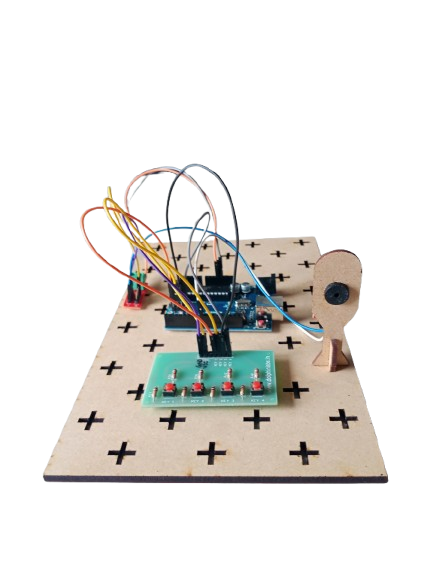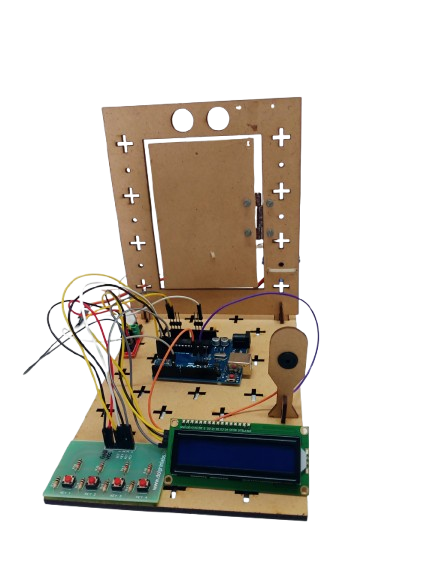Digital Ruler
A digital ruler is an electronic measuring device that provides precise measurements of length, width, or depth. Unlike traditional rulers or tape measures, digital rulers use sensors and electronic displays (often LCD or LED) to show measurements accurately, usually in both metric (mm/cm) and imperial (inches) units. They are widely used in engineering, design, woodworking, tailoring, and education where precision is critical.
Description
The Digital Ruler is an electronic measuring device designed to measure distance accurately using sensors such as an ultrasonic or infrared sensor. The sensor detects the distance to an object, and a microcontroller processes this data to display the result on an LCD or LED screen. This system provides quick, precise, and error-free measurements compared to a traditional ruler. It is especially useful for measuring objects that are far away or difficult to reach. The device can also include features like unit conversion and auto calibration for better usability. Overall, the Digital Ruler makes measurement easier, smarter, and more efficient.
Features
- Digital Display – Shows measurements clearly in numerical format.
- Unit Conversion – Switch between metric and imperial units.
- High Accuracy – Can measure to fractions of a millimeter or inch.
- Memory Function – Some models can store measurements for later use.
- Durable Material – Often made from stainless steel, aluminum, or strong plastic.
- Zero-Reset Function – Allows resetting the measurement at any point.
- Portable & Lightweight – Easy to carry and use on-site.
- Auto Power-Off – Conserves battery life when not in use.
Applications of Digital Ruler
- Engineering & Manufacturing – For precise measurement of components.
- Woodworking & Metalworking – Accurate measurement for cutting and fitting materials.
- Tailoring & Fashion – Measuring fabrics and body dimensions.
- Education & Laboratories – Teaching measurement concepts and conducting experiments.
- Medical Field – Measuring body parts or wounds in healthcare applications.
Advantages of Digital Ruler
- High Precision – Provides more accurate readings than traditional rulers.
- Easy to Read – Digital display avoids errors in interpreting small marks.
- Unit Flexibility – Easy conversion between metric and imperial.
- Time-Saving – Faster than manual measurement and calculation.
- Compact & Portable – Can be carried and used in various environments.
Disadvantages of Digital Ruler
- Battery Dependency – Requires power, usually batteries, to function.
- Higher Cost – More expensive than traditional rulers or tape measures.
- Fragility – Sensitive electronics can be damaged if dropped or exposed to water.
- Calibration Needed – May require periodic calibration to maintain accuracy.
- Limited Range – Usually smaller than tape measures for very long measurements.
- Complexity – Some users may find digital features confusing compared to a simple ruler.
The Digital Ruler project demonstrates how sensors and microcontrollers can be combined to create a modern and accurate measuring tool. It reduces human error and provides fast, reliable distance readings. This project highlights the usefulness of digital measurement systems in daily life and technical fields.
-
An XOR (Exclusive OR) gate is a digital logic gate that outputs true (1) only when the number of true inputs is odd. For two inputs, the output is high when the inputs are different. XOR gates can be constructed using basic logic gates or directly with transistors (BJT or MOSFET). Using transistors, we can design compact, efficient circuits for custom digital logic applications.
₹160.00















